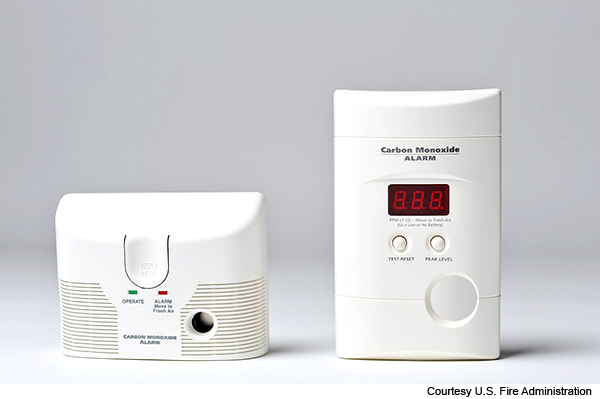Burning wood in a fireplace. Heating a home with a gas furnace. Cooking on a gas stovetop. Grilling with charcoal. Running a combustion engine such as an automobile or generator. Drying clothes in a gas dryer. Many of us enjoy these modern conveniences, but what is the danger they all have in common? Carbon monoxide.
In 2010, U.S. fire departments responded to more than 80,000 non-fire carbon monoxide incidents. In 2008 alone nearly 200 people died from carbon monoxide poisoning. Carbon monoxide (abbreviated CO) is a colorless, odorless, invisible gas given off when fuels such as wood, coal, natural gas and gasoline, burn. In homes, some of the most common sources of CO are heating equipment, generators, automobiles, stoves, ovens and dryers.
CO precautions
To prevent carbon monoxide, have fuel-burning equipment inspected by a professional every year or more frequently if recommended by the manufacturer. This includes furnaces, wood- or coal-burning stoves, fireplaces and chimneys. Ensure vents for the dryer, furnace and fireplace are not obstructed, particularly after snowfalls.
Never use the stove or oven to heat your home or burn charcoal or use a charcoal grill indoors. Never warm or run a vehicle in the garage, even with the door open. Always run vehicles outside in well-ventilated areas. Use portable generators outdoors in well-ventilated areas away from doors, windows or vents.
CO alarms
Carbon monoxide alarms should be installed in a central location outside sleeping areas, and on every level of the home. Follow the manufacturer’s instructions for placement and mounting. Use only those alarms that carry the label of a recognized testing laboratory. Test the CO alarm monthly, and replace according to manufacturer’s recommendations.
CO alarms are not a substitute for smoke alarms; you need both in your home. Be sure to know the difference between smoke alarms and carbon monoxide alarms. If your CO alarm sounds, move outdoors and call your fire department. If you cannot move outside and call, go to an open window or door to contact help.
Half of all carbon monoxide calls to fire departments occur in the winter months, and mostly in the evening.
By following these precautions, you can help protect your family from this byproduct of our modern lives.
More fire prevention information:
Kitchen a hot spot for home fires, injuries
Correctly placed, working smoke alarms save lives
Escape plans critical to surviving a fire
College students may need fire prevention refresher
This loss control information is advisory only. The author assumes no responsibility for management or control of loss control activities. Not all exposures are identified in this article. Contact your local, independent insurance agent for coverage advice and policy service.

